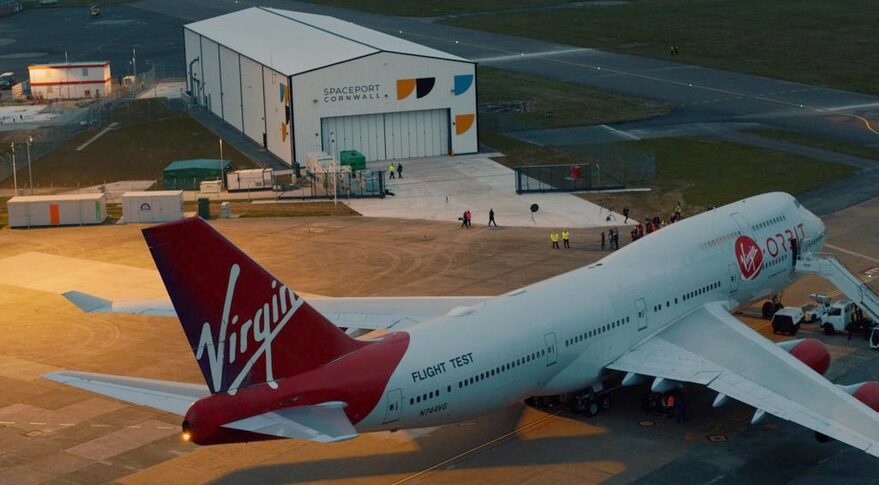
Virgin Orbit blames launch failure on upper stage anomaly (Image Credit: Space News)
SEATTLE — Virgin Orbit says its first LauncherOne mission from the United Kingdom failed to reach orbit Jan. 9 when an anomaly caused a premature shutdown of the rocket’s upper stage.
In a Jan. 12 statement, Virgin Orbit provided a few new details about the failed “Start Me Up” mission from England’s Spaceport Cornwall, which attempted to place nine satellites into orbit. The failure was the first for LauncherOne since an inaugural demonstration mission in 2020.
According to the company, the initial phases of the launch, including the rocket’s deployment from its Boeing 747 aircraft and first stage burn, went as planned. The rocket’s second stage then separated and ignited its NewtonFour engine, followed by payload fairing separation.
“Later in the mission, at an altitude of approximately 180 km, the upper stage experienced an anomaly. This anomaly prematurely ended the first burn of the upper stage,” the company stated. The company did not disclose additional details about the anomaly.
Observers had speculated that some sort of issue with the upper stage caused the failure, although issues with the telemetry displayed during the launch webcast, such as spurious data, made it difficult to narrow down the nature of the problem or its timing. The company did not explain why it initially announced during the launch that the upper stage had reached orbit, a claim it retracted nearly a half-hour later.
Virgin Orbit has started a formal investigation led by Chad Foerster, its chief engineer and vice president of technology, and Jim Sponnick, a former vice president of Atlas and Delta programs at United Launch Alliance. The company did not estimate how long that investigation will take.
“Upon identifying the anomaly, our team immediately moved into a pre-planned investigation mode,” Dan Hart, chief executive of Virgin Orbit, said in the statement. Given the company’s experience with the vehicle and “ample telemetry data” from the flight, “I am confident that root cause and corrective actions will be determined in an efficient and timely manner.”
Virgin Orbit said LauncherOne’s return to flight will take place from Mojave Air and Space Port in California, which had hosted all five previous missions before this launch. The rocket for that mission is going through final integration and checkout.
The company said it expects to return to Spaceport Cornwall for future launches, “and is in active discussions with key government and commercial stakeholders in the U.K. to start planning mission opportunities for as soon as later this year.” Hart, at a Jan. 8 pre-launch briefing, offered a similar timeline but with caveats. “I’m not sure that will happen, but it’s not out of the question,” he said then of a second LauncherOne mission from Cornwall before the end of the year.
A swift and successful return to flight is critical for Virgin Orbit, which was losing a significant amount of money even before the failure as it struggled to increase its launch rate. The company ended its fiscal third quarter with $71 million in cash and negative free cash flow of $52.5 million, although the company has since raised $45 million in two separate tranches from Virgin Group and its investment arm.
Shares in Virgin Orbit fell 14% on the Nasdaq exchange Jan. 10, the first day after the failure, but rebounded slightly Jan. 11. The company’s shares are still trading near its low since going public a little more than a year ago in a SPAC merger.








